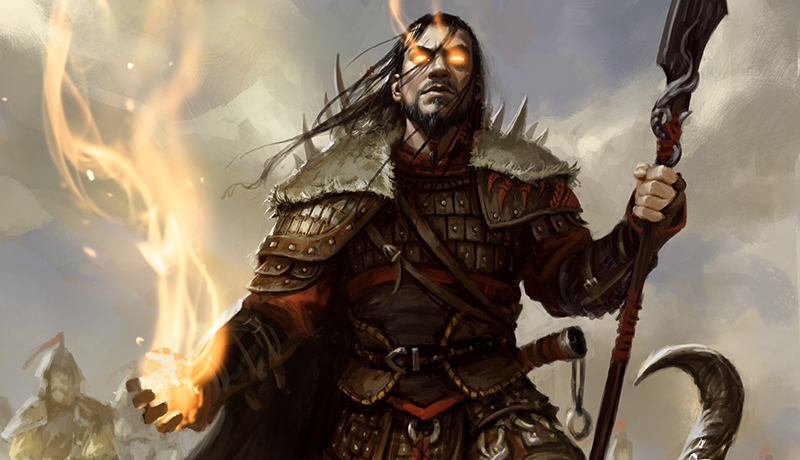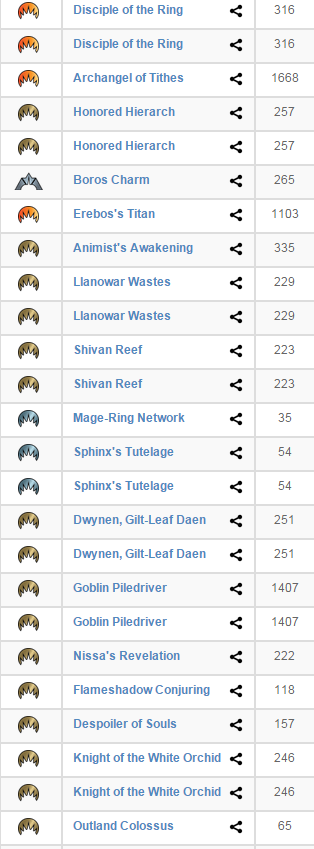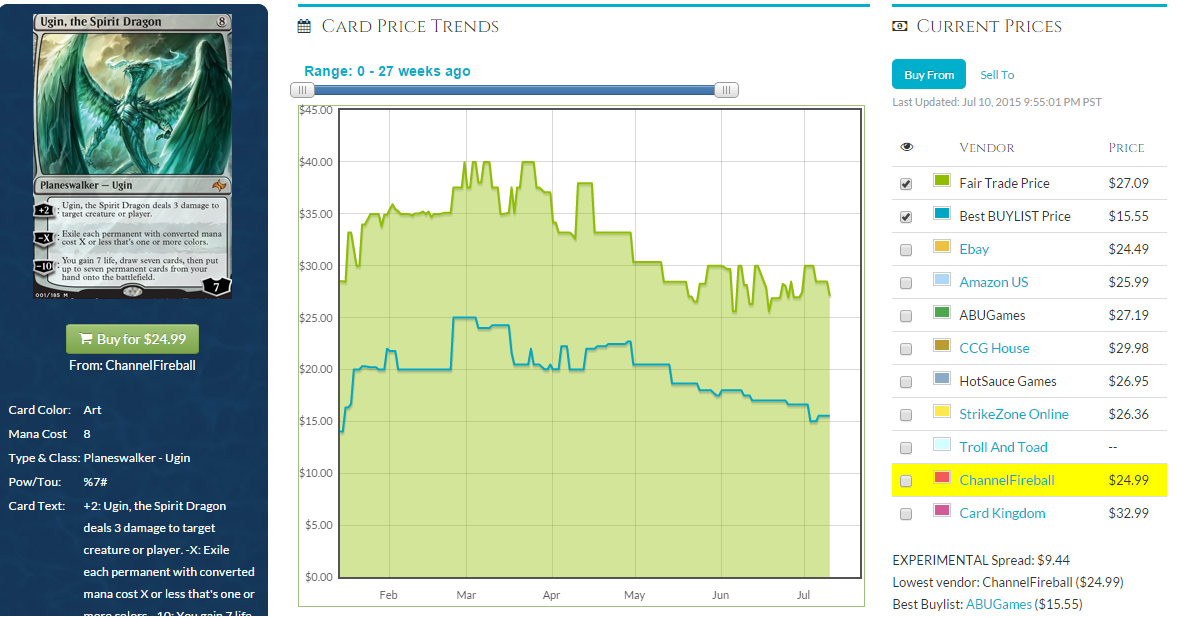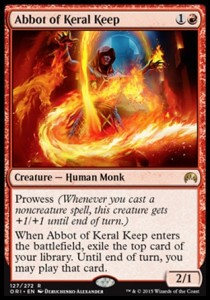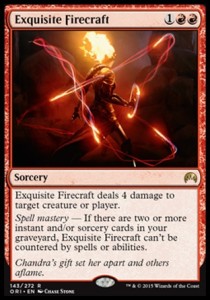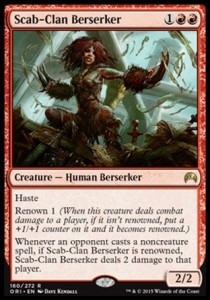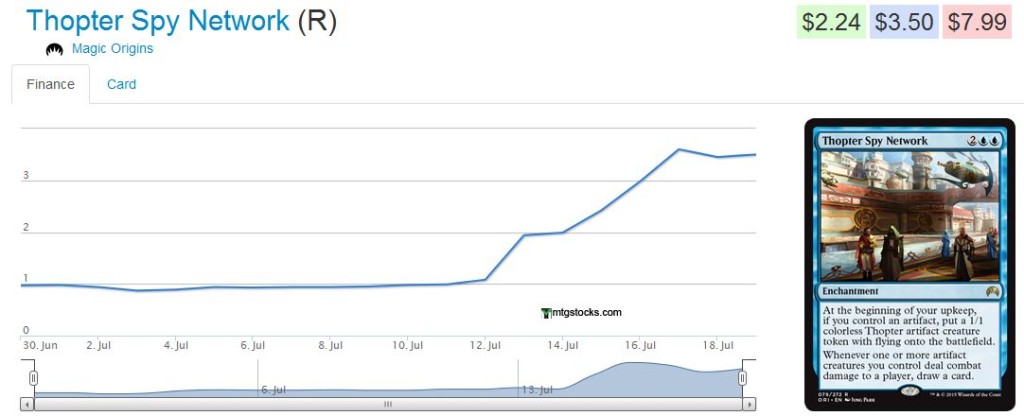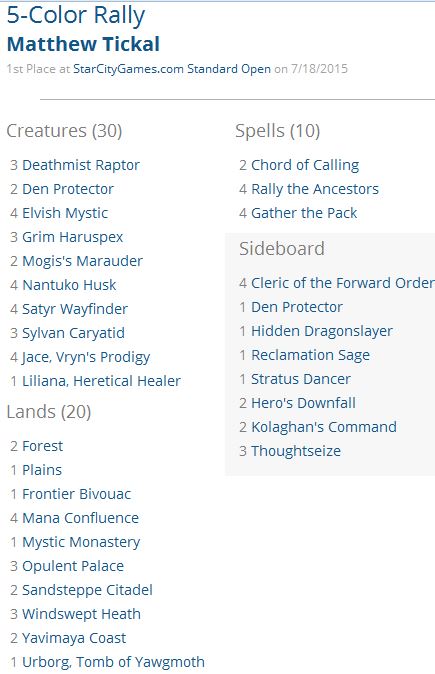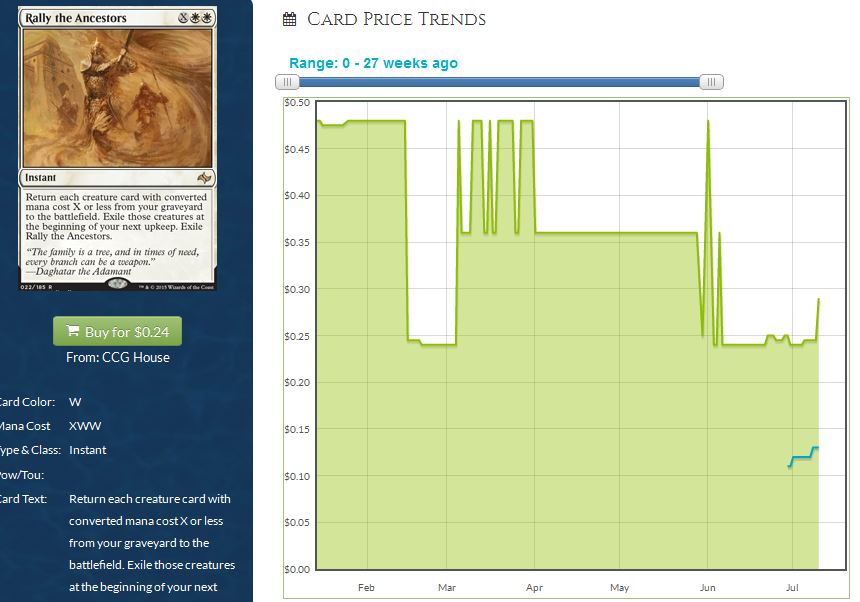Once again, major changes are afoot in the Wonderful World of Magic Online™, this time targeting Constructed events and their prize structures. This announcement is bigger than just some minor restructuring, though: the quick summary is that Wizards is introducing a new currency, doubling entry fees for Daily Events (without a corresponding prize increase), and stifling player-to-player trading, including player-to-bot trading. This is a big deal, and whether or not it goes well, the MTGO economy will be seeing the fallout from this for the foreseeable future. If you play Magic Online or are concerned about its economy, you should definitely check out the official post with full details.
However, because that article is written with a whole lot of coded language and corporate doublespeak, I’ll be FJM‘ing it below. Without further ado, here’s Magic Online Digital Product Manager Lee Sharpe:
Magic Online is an awesome place to play Magic. We think it could be better with some changes, particularly focused on Constructed events. Recent player feedback supports this as an area where we can improve, especially when alternative Limited events such as the Tempest Remastered or Cube Drafting are available. In this spirit, today we are announcing some changes to Magic Online events.
This is a promising start. Wizards is listening to player feedback and instituting the Constructed-equivalent of Tempest Remastered and MTGO Cube. Could this be the long-promised return of leagues?!
WHAT ARE YOUR GOALS WITH MAKING THESE CHANGES?
We focused on what Constructed players want to do with their prizes and made sure our prize offerings reflected those goals:
- Provide a prize that allows a Constructed player to immediately jump in another event.
- At least some events provide players with prizes that allow for better deck customization as preferences and sets change.
Okay, okay. You might think this is getting good. I assumed that what Sharpe was saying with point number one above is that events will now pay out once you finish your final round, as they currently make you wait for every match to finish before handing out prizes. (Spoiler: this is not what Sharpe is saying.)
What Sharpe is really saying with point number two is, “At least some events provide players with prizes that have actual value.” This, in fact, is not good.
WHAT ARE THOSE CHANGES?
Play Points will now be used as prizes for Constructed queues and Daily Events. Eight-Player Queues and Daily Events will award prizes that are a combination of Play Points and boosters, while two player queues will award prizes that are entirely in Play Points. Additionally, all three of these plus many other Magic Online events will have an additional entry option that consists entirely of Play Points.
I wonder why they don’t just pay out in event tickets, the already-established currency on Magic Online?
We believe Play Points will do a great job of achieving the first goal, which is to allow players to play events more easily. To make sure the second goal is also met, we are still awarding some prizes as booster packs. Players can trade or open these boosters to help them get new cards for their decks.
Again, why not just award event tickets rather than introduce a new currency? There has to be a catch.
In the future, we plan to look at other ways to use prizes to promote deck customization besides booster packs (mainly because they are mostly used currently to join Limited events). However, for now we want to focus on the changes that we’re announcing today.
This is a completely unnecessary paragraph. I imagine that Sharpe is hinting at prizes of singles for Constructed events in the future, but Wizards doesn’t have much of a track record of delivering on promises related to Magic Online, so don’t count on this paragraph ever meaning anything. It exists solely to say, “This isn’t the only thing we’re doing, guys! We know this isn’t good enough or even good at all but we’re super seriously working on something better! Pinkie promise!” If it’s not actively being instituted, assume it will never happen.
DETAILS OF THE NEW CONSTRUCTED EVENTS
Before we talk about additional ways to use Play Points, here are the details of the events where you can win them!
Constructed Two-Player Queue
Start Times: Fire on demand
Location: Constructed Queues
Entry Options:
- Option 1: 2 Event Tickets
- Option 2: 20 Play Points
Size: 2 players
Play Style: Single Elimination
Duration: One round, lasting up to 50 minutes.
Sharpe is starting with one of MTGO’s biggest weaknesses: two-player queues. For the uninitiated, two-player queues cost two event tickets to enter for each player. The MSRP for a booster pack is four tickets, so ostensibly, the winner gets the full value for the four total tickets of entry fee.
However, ever since the 2013 increase of redemption fees from $5 to $25—the impact of which would take an entire article to fully describe—pack prices have plummeted. Generally, a player should be able to get between two and three tickets each for booster packs, with occasional jumps above three or dips below two. With pack prices consistently lower than MSRP, there have been times during the last two years where you could have a 90-percent win percentage in two-player queues and still be losing money. The problem is that many competitive players see these queues as the most time-efficient way to play meaningful games to test their decks.
So how do the Play Points prizes look?
Place 1st Prizes 30 Play Points QPs 0 2nd Prizes 5 Play Points QPs 0
Before, Wizards could pretend like it was not taking a cut off of two-player queues when essentially selling a booster pack for four tickets. Now, the players know upfront that 12.5 percent of their combined entry fee is going to the house. I bet Sharpe tries to spin this positively:
The Two-Player Queue is available for Standard, Modern, Legacy, Vintage, Pauper, and Momir Basic. If you win, you get enough Play Points to play in another one, plus you’re halfway to the one after that. If you lose, you’re a quarter of the way to a free one. Keep earning more points!
Told you.
Ultimately, not much changes economically for players of these queues. This essentially stabilizes the winner’s prize at the equivalent of three tickets, with a pity half-ticket going to the loser. I’m not a math scientist, but that still seems to be unfavorable to the average player, who wins about 50 percent of his or her matches. If Wizards actually gave the full amount of Play Points back to the players, it might be a different story.
Constructed Eight-Player Queue
Start Times: Fire on demand
Location: Constructed Queues
Entry Options:
- Option 1: 6 Event Tickets
- Option 2: 60 Play Points
Size: 8 players
Play Style: Single Elimination
Duration: Three rounds, each round up to 50 minutes.
Prizes:
Place 1st Prizes 2 Magic Origins booster packs and
140 Play PointsQPs 2 2nd Prizes 1 Magic Origins booster pack and
60 Play PointsQPs 1 3rd-4th Prizes 60 Play Points QPs 0 The Eight-Player Queue is available for Standard and Modern. Winning the first match gets you enough Play Points to play in another eight-player queue. Winning the second match gets you enough Play Points to play in another eight-player queue, plus a booster. Finally, if you can win all three matches, you’ll receive more than enough Play Points to enter two more eight-player queues, on top of two boosters!
I’m sure there will be players unhappy about these only being available for Standard and Modern, but the eight-man queues don’t seem so egregious to me. The old prize payout was five packs for first place, three packs for second place, and two packs for third and fourth places. If we’re assuming that ten Play Points are worth roughly about the price of a ticket and that packs are worth about three tickets each, this seems like about the same payout for everybody except slightly better for first place. Whether you like a top-heavy payout is purely a matter of personal preference.
Constructed Daily Event
Start Times: See Schedule
Location: Constructed Scheduled
Entry Options:
- Option 1: 12 Event Tickets
- Option 2: 120 Play Points
Size: 8 players
Play Style: Swiss
Duration: Four rounds, each round up to 50 minutes.
Prizes:
Match Wins 4 Wins Prizes 6 Magic Origins booster packs and
360 Play PointsQPs 3 3 Wins Prizes 3 Magic Origins booster packs and
180 Play PointsQPs 1
SOUND THE OUTRAGE ALARM.
Sharpe really buried the lede here, as now we’ve gotten to the part where Wizards is doubling of the price to enter Daily Events, one of the defining tournament series on Magic Online.
Most recently, Daily Events cost six event tickets to enter and consisted of four rounds of Swiss play. If you went 4-0, you got 11 packs, whereas 3-1 got you six packs. Even when packs are as low as two tickets, this is more than a triple-up for going undefeated and a nice double-up for going 3-1.
I should really note how important Daily Events are to Magic Online players who want to “go infinite.” These aren’t the best value in history (Daily Events used to give 13 packs for 4-0, for example), but they’re good enough value that players can dream about stringing together enough 3-1 and 4-0 finishes that they don’t have to put money into Magic Online anymore, with the best players even turning a profit.
From WOTC’s perspective, players turning a profit or playing for free appears bad, but there’s a bigger picture here. How many players have dumped a ton of money into Magic Online hoping to go infinite but never really get there? My guess would be many, many more than those that do actually reach the goal of playing for free. However, with this move, Wizards has shattered the dream of going infinite for a whole lot of players, as the prizes have not increased as sharply as entry fees.
For illustration’s sake, let’s assume a three-ticket booster pack price, even though that’s not very realistic recently. Old Daily Event 4-0s would pay out 33 tickets after an entry fee of six, an increase of 550 percent. Now a 4-0 record pays about 54 tickets of value compared to a 12-ticket entry fee, an increase of only 450 percent.
Does a 3-1 payout improve? With a three-ticket booster, the old system’s 3-1 record would result in a triple-up from six tickets to 18. Now players get roughly 27 tickets for their 12-ticket entry fees, nine tickets short of that triple up we used to see.
There’s no doubt about it: Wizards is significantly lowering the payout for Daily Events.
Constructed Daily Events are available for Standard, Modern, Legacy, Vintage, and Pauper. They reflect the highest level of regularly available competition on Magic Online. As such, we are increasing the number of event tickets used to join to reflect this and help distance it from the eight-player queues. Since the quality of play in Constructed Daily Events can be quite intense, we expect some players will stick to the queues. Choose the level of event that is right for you.
“We determined that Daily Events were decidedly better value than everything else we offer, and rather than consider the fact that these being scheduled events is a reasonable enough downside to justify that better value, we decided to double the entry fee instead.”
You’ll also see the prize structure provides some very good rewards for those who do well under this system: Three wins gets you three boosters as well as enough Play Points for another Constructed Daily Event entry and halfway to one after that. Four wins is six boosters, plus enough Play Points for three more Constructed Daily Event entries. We hope these events are exciting—and the prize structures different enough from each other—that no matter what kind of player you are, you will be able to find the event offerings that are right for you.
No mention of the fact that the Daily Event payout has been neutered. Sharpe has failed to convince me that these are “very good rewards.”
WHAT ELSE CAN I DO WITH PLAY POINTS?
We want players to have the options to select a variety of ways to use their Play Points. You can see above how you can use them in Constructed Queues and Daily Events. Play Points, like Phantom Points before them, are untradeable…
Let me cut you off right there, Lee. He’s trying to skip over the most important part, but the fact that these are untradeable is a crucial point.
As someone who plays on MTGO primarily for Cube, I can appreciate Phantom Points, but they are terrible value for anything other than that one format. I’ve avoided phantom Draft and Sealed events like the plague, but now Magic Online is instituting a terrible system for all of its Constructed queues. Got that? Let’s move on.
…and we’re excited to be able to use them creatively in new and exciting ways because of that. Also like Phantom Points, Play Points will be available as an entry option for Phantom Queues, and we are expanding their use as entry options in the following other events:
Event Type Booster Drafts Current Entry Options Option 1: 14 Event Tickets
Option 2: 3 Boosters and 2 Event TicketsNew Additional Entry Option Option 3: 140 Play Points Four-Booster Sealed Events Current Entry Options Option 1: 18 Event Tickets
Option 2: 4 Boosters and 2 Event TicketsNew Additional Entry Option Option 3: 180 Play Points Sealed Daily Events Current Entry Options Option 1: 26 Event Tickets
Option 2: 6 Boosters and 2 Event TicketsNew Additional Entry Option Option 3: 260 Play Points PTQ Preliminaries
(Constructed and Sealed)Current Entry Options Option 1: 30 Event Tickets New Additional Entry Option Option 2: 300 Play Points The prize structures of these event types are unchanged. They will not award any additional Play Points. But we believe this new structure will provide players Constructed players with the opportunity to use Play Points beyond events that award them as prizes.
Admittedly, it would be pretty annoying to not get to enter Limited events with these, and at least they’re not trying to pay out in only Play Points, so this part is basically fine.
WHEN ARE THE EVENTS CHANGING?
The new structures will begin after the August 12 downtime, when release events for Magic Origins end.
Just enough time to sell your account! (And MTGO Traders owner Heath Newton confirmed that many players are.)
CAN I USE PLAY POINTS ALREADY IN MY ACCOUNT FOR THESE EVENTS?
Yes! As I stated in the June Events article, Play Points will be introduced and Phantom Points will be retired during this Wednesday’s downtime. However, each account will receive 6 Play Points for every Phantom Point they have in their account at that time.
Thanks, I guess?
CAN I BUY PLAY POINTS IN THE MAGIC ONLINE STORE?
No. The only way to get Play Points is through events (although sometimes they also may be available through special promotions). Most events that support a Play Point entry option will also support an event ticket entry option, and those tickets are available in the Magic Online Store.
Yep, these are totally the replacement for phantom points.
WHERE SHOULD I SEND MY FEEDBACK?
You can send detailed feedback to magiconlinefeedback@wizards.com. This email goes directly to Worth Wollpert, Mike Turian, Chris Kiritz, and me—the team making the day-to-day business decisions about Magic Online. I generally read everything the same day it comes in.
We also read Magic articles published online and the Magicsubreddit. You can also reach us via Twitter through the official @MagicOnline Twitter account or directly at my account, @mtg_lee.
Lee Sharpe
Digital Product Manager—Magic Online Events
Such a large section devoted to soliciting feedback indicates that Wizards knows this is a player-unfriendly move. The Magic community has been able to get Wizards to backtrack on bad decisions before. If you feel this impacts you negatively, let Wizards know.
The Future of the MTGO Economy
Nobody really knows what will happen to Magic Online’s economy as a result of these changes, but we can make some educated guesses.
First, let’s discuss booster pack prices. It stands to reason that if fewer boosters are being put into the hands of players, the price of individual boosters will increase. As prizes for events, this is good, but keep in mind that most events now pay out in Play Points, so this ultimately ends up being a minimal payoff for Constructed players. Limited players, however, will be paying higher pack prices, meaning that drafting on Magic Online will be more expensive. This doesn’t appear to benefit Constructed or Limited players. I wonder who does benefit, then? (Wizards).
Second, players will have less need to sell boosters or singles for tickets, so player-to-player trades will decrease. This includes player-to-bot trades, as bots are owned by individual Magic Online players. This move should decrease secondary market commerce significantly.
Third, players will have less ability to liquidate their collections. Since Play Points can’t be traded, they can’t be sold on the secondary market, either. A player looking for some quick cash used to be able to sell prize packs and singles for tickets and sell tickets for cash. While that is still technically true, Constructed players will have fewer packs to work with and will be accumulating Play Points that can’t be liquidated quickly or efficiently.
The community at large seems to be quite upset with these changes. The fallout may not be as bad as many are predicting, but I would hardly call these changes a good thing for the player base. Still, this Reddit post outlines much of the expected value of events moving forward, and yeah, the world will probably go on. I’d still love to see WOTC’s internal numbers after this change.
Magic Online has long justified its high prices despite its low costs by stating that the paper and digital games should have as much in common as possible. Now it appears that Wizards is taking steps toward making Magic Online a self-contained economy where one is not able to liquidate cards or currency, like what we see in Hearthstone and SolForge. The problem is that the prices remain comparatively high to those games.
There’s so much more to be said about Magic Online, but this should be a good overview of why there is controversy regarding Monday’s announcement. If you’re unhappy with these changes, let Wizards know. And hey, post your thoughts in the comment section below. Remember, Wizards has backed off due to community backlash before. Do you think these changes benefit anyone but the company’s shareholders?
